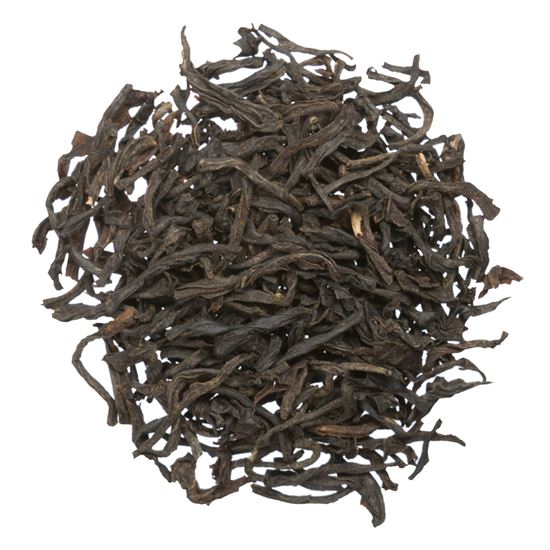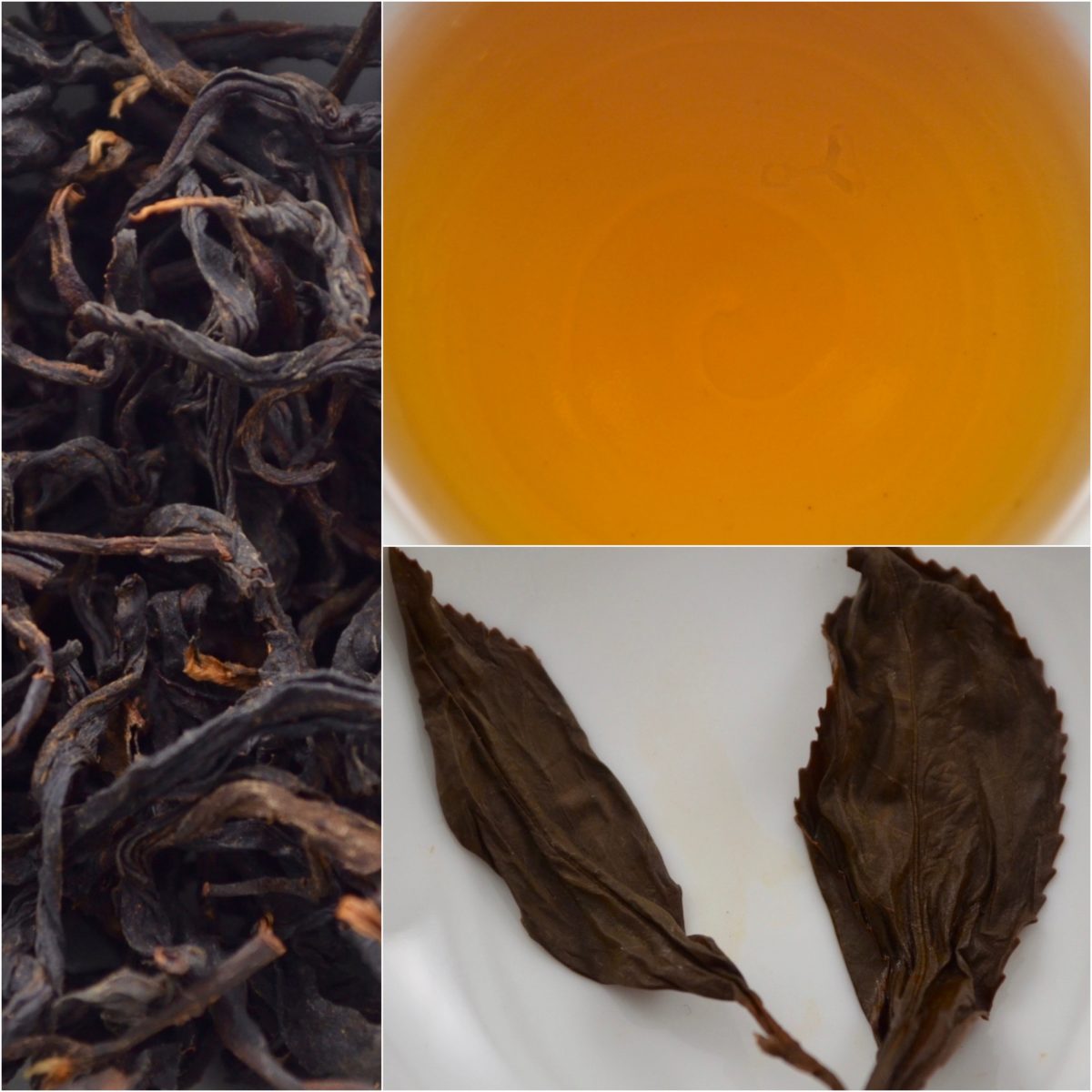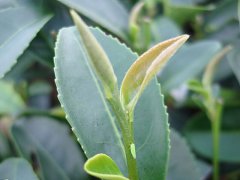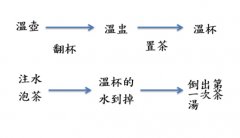The basic Evaluation knowledge of Tea how to judge the quality of tea and what is the guide for the selection of tea?
Appearance of dried tea
(1) shape
Look at the tea cyanine old and tender: the tea made of young and fresh leaves has a larger proportion of excellent tea, that is, it contains more tea, soluble tannins and total nitrogen, while the content of extract and crude fiber that will reduce the quality of tea is less. On the contrary, the content of tea made from rough and fresh leaves is just the opposite. Generally speaking, as long as the fresh tea itself is young and tender, the tea is not too thick, and the one who is well curled into oil and soaked in color is a good product.
Look at the tightness of the cable: if you look at the tightness of the cable, you can see the variety of tea, the growth zone, the influence of the season, and the quality of the manufacturing technology. before identifying the quality of the tea, you can make a difference in terms of the rope. Good tea strips should be tight and firm, and should show the standard type that they want to represent.
Measure the weight of the tea: heavy tea, the rope must be tight, soak water is also thick, the tea can not deteriorate for a long time during storage. Light tea, the rope must be loose but not tight, there are gaps in the tea, not only the percentage of refining is low, and the water taste must be thin, not resistant to storage, packaging materials are also wasted. Gaoshan tea is heavier than Pingdi tea, and spring and summer tea is heavier than autumn and winter tea. Different varieties have more obvious differences in tea body weight. Tea dryness is also closely related to tea body weight. All these should be carefully considered when identifying the weight of tea.
Look at the uniform shape: if the variety of fresh leaves is simple and the growth time is the same as that of cultivation, the growth and tissue of tea cyanine must be roughly the same. using it to make tea not only makes the treatment of each process easy to control, but also makes the shape of tea uniform. it can be judged that the quality of tea is generally good, because in the manufacturing process, difficult problems will not occur.
Look at the cleanliness of the whole crushing: the tea is evenly broken and less broken. The cleanliness mainly depends on whether the tea is mixed with tea chips, tea stalks, tea powder, tea seeds and the amount of bamboo chips, wood chips, lime, sediment and other inclusions mixed in the production process.

(2) Color and lustre
Color: black tea with oil light is the best surface color of black tea, and the number of bud tips with white hairs in the tea is one of the important conditions of black tea price, reddish brown or grayish brown without oil. Green tea, such as Mao tea, is dark green and glossy. If it is a refined product, eyebrow tea with oil green or silver gray with light yellow or light green as its standard color, khaki or dark gray is not good. In the case of pearl tea, dark silver green or near lead green is better, and the color must be glossy and lively. Oolong tea is bright dark green, with glossy surface as the top grade.
Color uniformity: the simple or mixed color of tea surface is one of the conditions for color evaluation. For example, the mixed colors of new and old teas, the complex colors of different sources of maocha, the differences in surface colors caused by different degrees of dryness and wetness, the special colors of the same tea due to different raw materials of fresh leaves, the color differences caused by different seasons or manufacturing methods, etc., have to be carefully identified one by one.
Tea color
Clear or cloudy: clear, bright and shiny, with less sediment at the bottom of the cup. If the tea powder contains a lot of tea, the color of the water after soaking is also unclear because of the floating turbidity of the tea powder.
Bright or dark: bright water colors are precious, such as good black tea and oolong tea, the water color is the most favorite, moldy tea or old tea, the water color is mostly dark.
Thick or light: in general, the water color of tea is slightly thicker and more expensive, but it cannot be so dark that it must be kept bright and clear.
Vivid or stagnant: if the color of the tea is suitable, and it is clear and bright, the water surface appears on the cup surface like a layer of oil along the inner edge of the cup. the more the color of this layer of oil condenses, the more vivid the water color is. Otherwise, the tea will look weak. Identification is often based on the oil layer along the edge of the cup noodles to judge vividness or stagnation. The color of soaking water with good tea quality is a vivid phenomenon.
Tea aroma
[category]
Each color tea has its own unique fragrance, generally speaking: the fragrance of oolong tea lies in its natural fruit aroma, such as apple, grape, pear, apricot, etc.; the fragrance of bag tea is close to that of flowers, such as jasmine, sweet-scented osmanthus, rose, magnolia and so on. The fragrance of black tea is mostly malt, caramel, ripe caramel, fried chestnut, its fragrance is mellow and sweet; the fragrance of green tea is closer to the fragrance of camellias, which is a natural tea fragrance, that is, fragrance, and its fragrance lies in freshness and sharpness.
[degree]
The aroma of pure harmony makes people feel fresh and refreshing, while those who are muddy or have a strange smell are disgusting.
Hot smell. It means to smell the fragrance while it is hot as soon as you filter out the tea or quickly read the color of the soup. At this time, it is easiest to tell whether the tea has stale, mildew or other miscellaneous gas. As the temperature drops, the abnormal gas part will be emitted, and the sensitivity of the sense of smell to the foreign gas will also decrease. Therefore, when hot sniffing, the main purpose is to distinguish whether the aroma of tea is pure or not. Hot sniffing when the temperature is relatively high, the nose will have a hot feeling, sniffing should also be gently sniffed, the speed should be fast, a sniff is over, seize the feeling of a moment, can not smell for a long time, so as to avoid olfactory numbness.
Wen sniff. After the hot smell, come to smell the aroma, at this time the temperature in the cup drops, the hand feels slightly warm. Warm smell when the aroma is not hot not cool, the most easy to distinguish the concentration of aroma, high and low, to sniff carefully, pay attention to understand the intensity of the aroma.
Cool smell. Many tea friends will ignore this link, but it is very important. Taste the tea and then smell the aroma. At this time, the temperature of the tea is close to the room temperature, and the feel is already cold. You should smell it deeply and carefully identify whether there is an aftertaste. If there is still a fragrance at this time, it is a sign of good quality, that is, what we often call "long-lasting aroma".

[taste]
Generally, the temperature of tasting is from high to low, and the temperature of 45-35 ℃ is more suitable. For example, when the temperature of the tea is too hot, the taste is strongly stimulated and numb. If the temperature of the soup is low, it is easy to paralyze and the sensitivity is poor.
Thick and light
At the entrance of the tea, it is felt that the amount of dissolved soluble matter in the tea is thick or weak, which is partly due to the fact that the polyphenols (Polyphenols) in the tea are partly produced by pectin, and the stronger tea flavor is generally better.
Irritant
Irritation refers to the slight sensation of tea that irritates the nose or throat, which is the most closely related to tea. The import of tea immediately induces the taste organs, such as the stimulation of fragrance, the sharpness of taste and the sense of dullness. The intensity of irritation varies with different kinds of tea, black tea and green tea are more irritating, oolong tea and package tea are lighter in turn.
Convergent property
The convergence of tea is different from that of irritation, and the convergence belongs to tea tannin. That is, when tea is imported, all parts of the oral cavity seem to be immediately controlled by the tea, and saliva seems to have lost its original function in the mouth. The tea soup with strong convergence is not enough, neutralization and smoothness is the most expensive.
Trait
Different tea soups have the characteristics of all kinds of tea, such as the pure and fresh smell formed by the fragrance of growing tea and roasting, the sweetness and mellowness of oolong tea, the beauty and strength of black tea, and the light and refreshing nature of green tea. This trait is best shown in the taste of tea as far as possible, otherwise it is not a good tea with the taste of green tea.
Vitality
This refers to the expansion of the tea entrance, a cup of tea that lacks vitality, just like we drink cold boiled water, which can be most felt when we brew more times. The existence of vitality depends on the amount of soluble matter dissolved and the appropriateness of fermentation or baking.
Tea body
This refers to the degree of intensity and persistence of the functions of the tea entrance. Tea with good body, whether it is full, full, smooth and smooth, is obvious.
Aftertaste
After drinking tea, the aftertaste in the mouth and throat induces saliva secretion, and because of the main components of aromatic oils, a sweet taste is produced by a number of more complex substances. In addition, anthocyanins and anthocyanins in tea have another kind of sugar, which is decomposed with water to form rhamnose. When the irritation and convergence of these tea leaves fade slightly, they will give birth to the oral cavity and make people feel sweet and sweet. In the throat, it feels refreshing and has an aftertaste.
Leaf bottom examination
The color, leaf spread, softness, leaf and bud tip of tea residue were intact and unbroken, and whether the raw material of tea cyanine was old, tender and uniform and whether the degree of fermentation was appropriate. At present, the examination of the leaf bottom is listed as a secondary item, because the shape, color and aroma of the tea have been evaluated, and the leaf bottom is related to other items, so it can generally be omitted, but the tea samples with the same score and high-grade tea samples are better than the leaf bottom. it's still necessary.
Foliar spread
After soaking, the leaves are easy to open, of course, the soluble matter can be soaked out quickly, but this kind of tea that is easy to unfold is mostly coarse old tea, the rope is not tight, and the soaking water is very thin, but the tea with tea buds is mainly twisted slightly, and the bottom of the leaves naturally unfolds after soaking. Is an exception. If the tea strips do not spread quickly after soaking, in addition to the lack of over-roasting tea, it is made of young and fresh leaves with good manufacturing technology, strong tea and more brewing times.
Leaf shape crushing
The shape of the bottom of the leaf is neat, and the leaves of debris are inferior.

The elasticity of tea body
The tea made by young and thick tea with good tea-making process should be elastic and tough after soaking, and the texture of tea should be like living leaves. If the tea is not smooth to the touch, too dry or easy to tear, it may be a problem with a ring in the growth and tea-making process; if the tea is easily rubbed into a final shape or sticky when rubbing the tea, it may be seriously deteriorated or chemicals may be added.
The new and old leaves
The difference between new tea and old tea can be fully understood in terms of leaf bottom. The color of the new tea leaf bottom is fresh and clear, while the old tea leaf bottom is mostly yellowish brown or dark black. At the same time, if there is stir-frying or excessive baking and coking, it can also be identified at the bottom of the leaf. In addition to Wuyi tea and Anxi tea, as well as some special teas that do not pay much attention to the new and old at the bottom of leaves, most of them are fresh.
Ye Zhi Chunza
The purity of tea can be correctly identified by the bottom of the leaf, for example, mixed black tea in oolong tea, or green tea mixed in tea, and sometimes a mixture of different varieties can be identified on the bottom of the leaf. But the mixture or simplicity of tea, as far as the characteristics of tea are concerned, is not necessarily good, but mixed is bad. This depends on the various characteristics of tea. In general, it is better to be pure.
Fermentation roasting degree
With the different degree of fermentation, the leaf bottom will be from light green, salted vegetable green, brown green to orange, crimson and other colors, the heavier the fermentation, the redder the color. With the weight of the baking, the color of the leaf bottom will be from light to dark, from green, brownish green to dark brown. The heavier the baking is, the darker the color will be.
Important Notice :
前街咖啡 FrontStreet Coffee has moved to new addredd:
FrontStreet Coffee Address: 315,Donghua East Road,GuangZhou
Tel:020 38364473
- Prev

What kind of black tea is honey-scented black tea? why does it have honey flavor? describe how to make the honey flavor of black tea.
When it comes to the most distinctive and expensive tea in Taiwan, there is nothing more than Oriental Beauty Tea, which has a sweet taste of honey, thick ripe fruit, delicious and pleasant. In the past, Oriental Beauty Tea had many names, such as Pufeng Tea, and some people called it Bai Hao Oolong and five-color Tea, until Queen Elizabeth II of England greatly appreciated it and gave it the name "Oriental Beauty Tea".
- Next

What are the knowledge points of the correct different brewing methods of tea? The process skills of brewing tea tutorial video
Small pot brewing method In the Oriental tea world, small pot brewing method is a more traditional and tea set with the most types and the widest combination of tea making methods. In formal tea competitions, or more formal occasions, this tea making method is adopted. The tea set combination of the small pot brewing method comprises a tea tray, a teapot, a tea sea, one to several smelling cups, tea tasting cups and tea saucers, and other tea brewing devices.
Related
- A complete list of coffee bean names and their meanings! What is Yejia Shefi coffee? Where is Mantelin coffee?
- What grade does Arida Manor Kaduai coffee beans belong to? What treatment is Arida ASD slow anaerobic sun exposure?
- The milk tea cup becomes smaller?! Overlord Tea Girl launches a new "Return to Yunnan" series
- Accused of selling counterfeit and high-priced coffee beans! Well-known boutique coffee brand "Oukelao" bowed and apologized!
- How to make espresso dumplings? Can I eat coffee and glutinous rice balls together?
- Save the unformed and stagnant powder cakes in one second! What is the problem with stagnant water in the powder bowl of the espresso machine?
- What does hand-brewed coffee stop mean? Why is it not recommended to make coffee by hand?
- Is it normal to smell like coffee? Why does coffee smell like alcohol? What's wrong with the strong smell of cold extract ice dripping ice brewed coffee?
- How to solve the problem that hand-brewed coffee extraction takes too long? Why is the water flowing so slowly when making coffee?
- The main points of making Australian white coffee, the proportion details, how does Australian white properly foam and blend the flowers?

